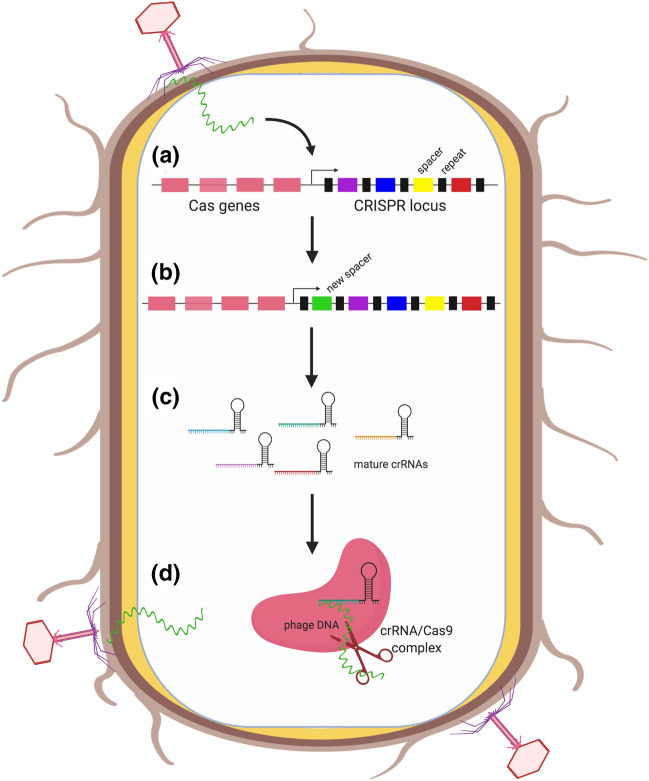Fig. 1.
CRISPR/Cas9 function in bacteria. a Genetic material from a virus, phage, or plasmid enters the bacterium. b Short segments of genetic information from the invading agent are inserted into the CRISPR region interleaved with spacer segments. c crRNA segments consisting of CRISPR repeats and spacers are constitutively expressed in the bacterium. d Invading nucleic acid segments are recognized by crRNAs, leading to assembly of a cleavage complex containing the foreign DNA, crRNA, and Cas9 protein and resulting in cleavage of the invading DNA

